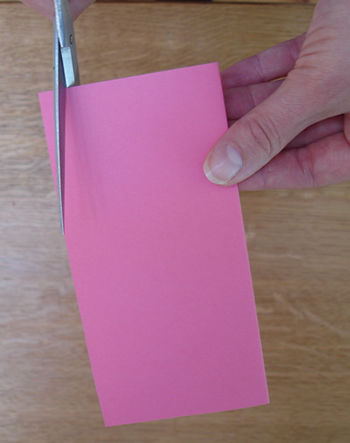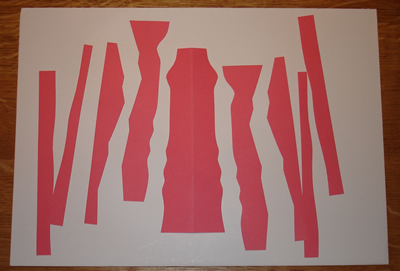Copyright © University of Cambridge. All rights reserved.
'Exploded Squares' printed from https://nrich.maths.org/
Show menu
Why do this problem?
This activity consolidates children's understanding of line symmetry. The nature of the task allows learners to explore line symmetry in a creative way, and the resulting pictures will make an engaging and attractive display which will remind children about the mathematical ideas.
Possible approach
The best way to introduce this challenge is probably to demonstrate how to cut the square, step by step, as the children each do the same with a square of their own, or one between two.
Once they have finished cutting, ask them to stick the centre piece down on the centre of the backing paper, but encourage them to arrange the strips of paper before sticking them down! Leave the children to decide for themselves how to create the symmetrical design.
When everyone has made their 'exploded' square, choose some of the pictures to stimulate discussion amongst the whole group. How do they know that there is a line of symmetry? You might select designs that demonstrate innovative ways of arranging the pieces, or those that represent a range of orientations of the mirror line.
Ask the children what they could do differently to make a different kind of exploding square. Give them the opportunity to create another square based on their own idea or someone else's suggestion.
You might want to spend some time at the end of the session asking the children to group their pictures in different ways, and justify their groupings. This is an ideal way to summarise the task in a way that actively involves the learners themselves.
Key questions
How do you know that this is a line of symmetry?
Tell me about your picture.
What happens if you fold the square of paper in half in a different way?
How could you create a picture with the mirror line in a different orientation?
How about folding two (or more) squares together so that you cut them in exactly the same way but then arrange them differently on the backing paper?
What is the same about these two pictures?
What is different about these pictures?
How could you group these pictures? Can you explain why you've grouped them in that way?
Possible extension
Encourage children to explore what happens when they fold the square more than once. Many children will also have their own ideas to investigate.Possible support
Some learners may like to draw in their cutting lines with pencil before using scissors.

